st year, we named the xel the king of all smartphone cameras, besting the Samsung Galaxy S7, V20, ione 7. st month, the xel tried to defend its crown against the G6, lost.
Now, a new contender tries to knock off the top spot. Samsung’s Galaxy S8 may appear to have the same camera specs as last year’s Galaxy S7, but don’t let the megapixel numbers fool you: it’s got a new sensor, new optics, new image processing algorithms.
Can Samsung’s latest greatest knock off its perch? t’s find out.
at we’re testing ( what we’re not)
Before we begin, how about a quick specs recap? The main rear camera of the Galaxy S8 uses a Sony IMX333 sensor with dual pixel autofocus. The resolution is 12 megapixels (with 1.4 micron pixels) it’s all behind an f/1.7 lens. It’s got optical image stabilization, too. The G6 has two rear cameras, one stard one wide-angle. They both use the same Sony IMX258 sensor, at 13 megapixels with 1.12 micron pixels. For our tests, we’re mostly concerned with the stard camera, which has optical image stabilization a superior f/1.8 aperture. The wide-angle lens, for the record, lacks OIS has an f/2.4 aperture.
Simply looking at the specs, Samsung has the upper h. It should perform better in low light with a wider aperture larger sensor, should focus more quickly.
It’s important to note that we tested these cameras the way most people use them, in auto mode. That means straight out of the pocket, using the stock app, with HDR set on auto. If a phone defaults to something less than full resolution, we rectify that, but otherwise this is the “out of box, out of pocket” experience.
’re going to look deeply at the cameras across three areas: color, clarity, range. took dozens of photos with each phone, what you see here is just a representative sample.
It’s important to note that this is not a comprehensive review of the entire camera experience. ’re looking at final shot quality across three main areas, but there are many other factors that go into a great smartphone camera. The speed at which the camera app loads is ready to take a photo (the “pocket to photo” time), shutter lag, shot-to-shot latency, burst speed, the camera app interface features, that’s all without even diving into video features or quality, or the front camera.
Color quality
en examining the color quality of the shots these phones produce, we’re concerned with accuracy, vividness, how well the camera balances color temperature.
It’s a cloudy day at SFO, while it’s good to see the Galaxy S8 back off on the typical Samsung oversaturation, the image is far too blue. The G6 has far more accurate color temperature. This is a big stumble for Samsung—the color tint here is well beyond typical “viewer preference” white balance.
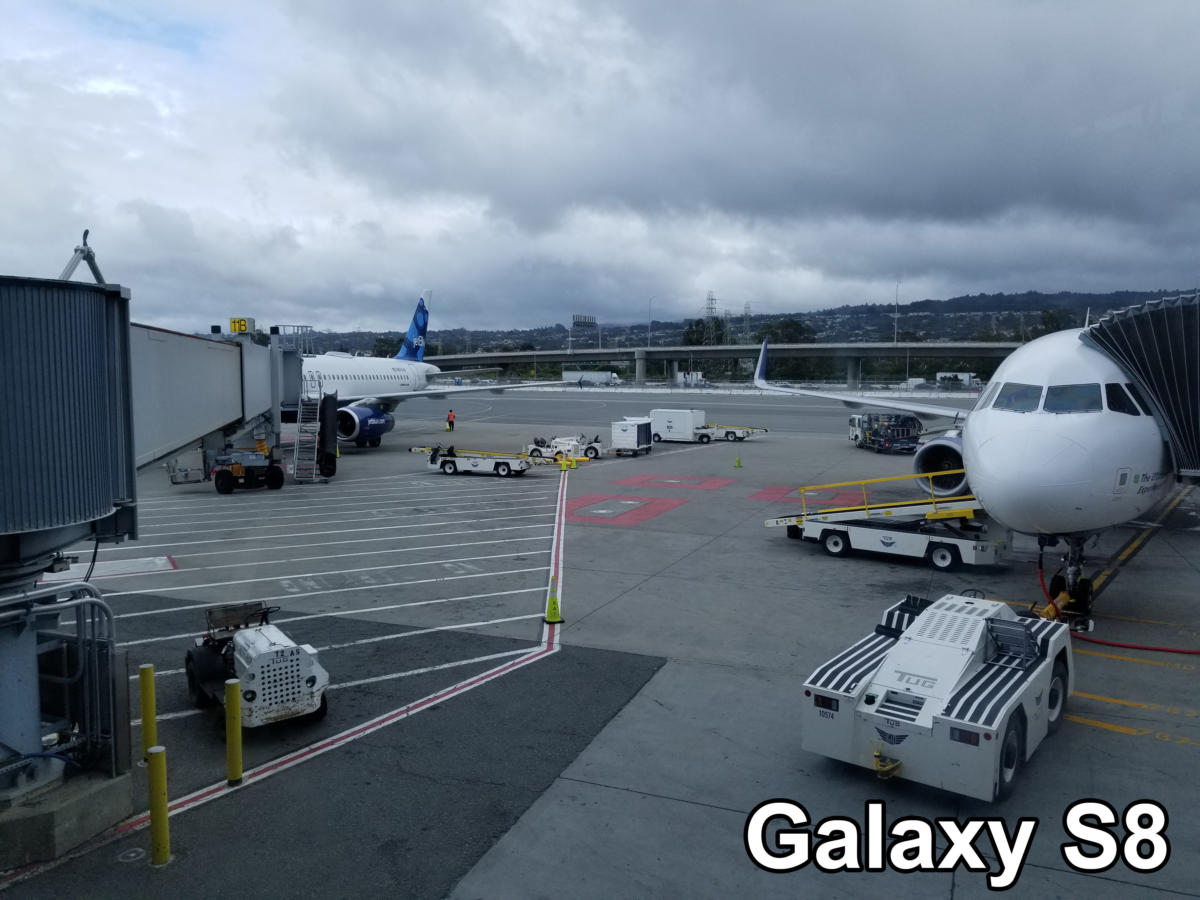 /
/The Galaxy S8 isn’t oversaturated, but the white balance is way off here.
 /
/The G6, by comparison, delivers an accurate color balance.
This next shot is challenging. The light emitted from the table is a cool blue, while the ceiling lights are a warm yellow. gets it right, accurately capturing the stark contrast between them, not just on the tables but reflected on the black camera lenses. Samsung locks on the cool blue table tries to compensate for it, turning it white the background lighting positively orange.
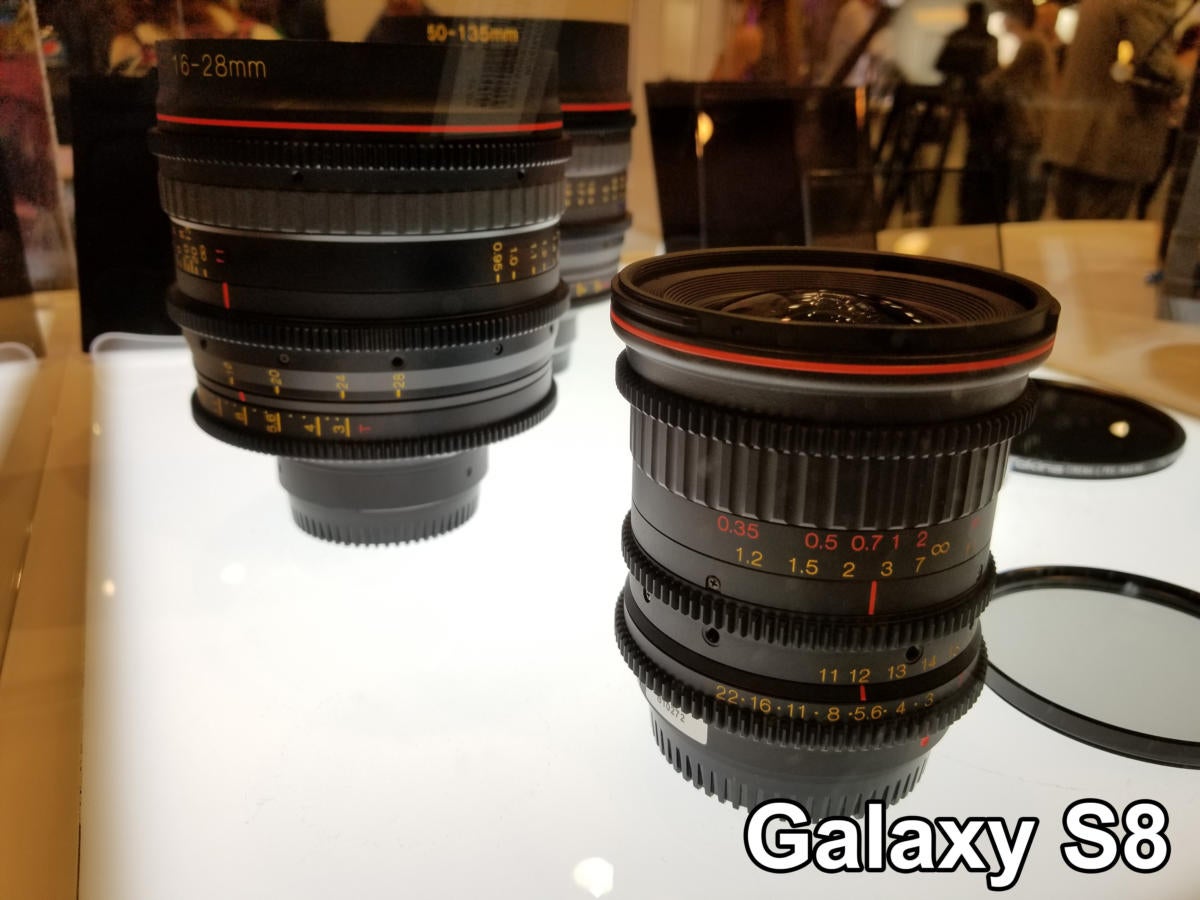 /
/Samsung tries to correct for the blueish tint of the table light, ruins the background.
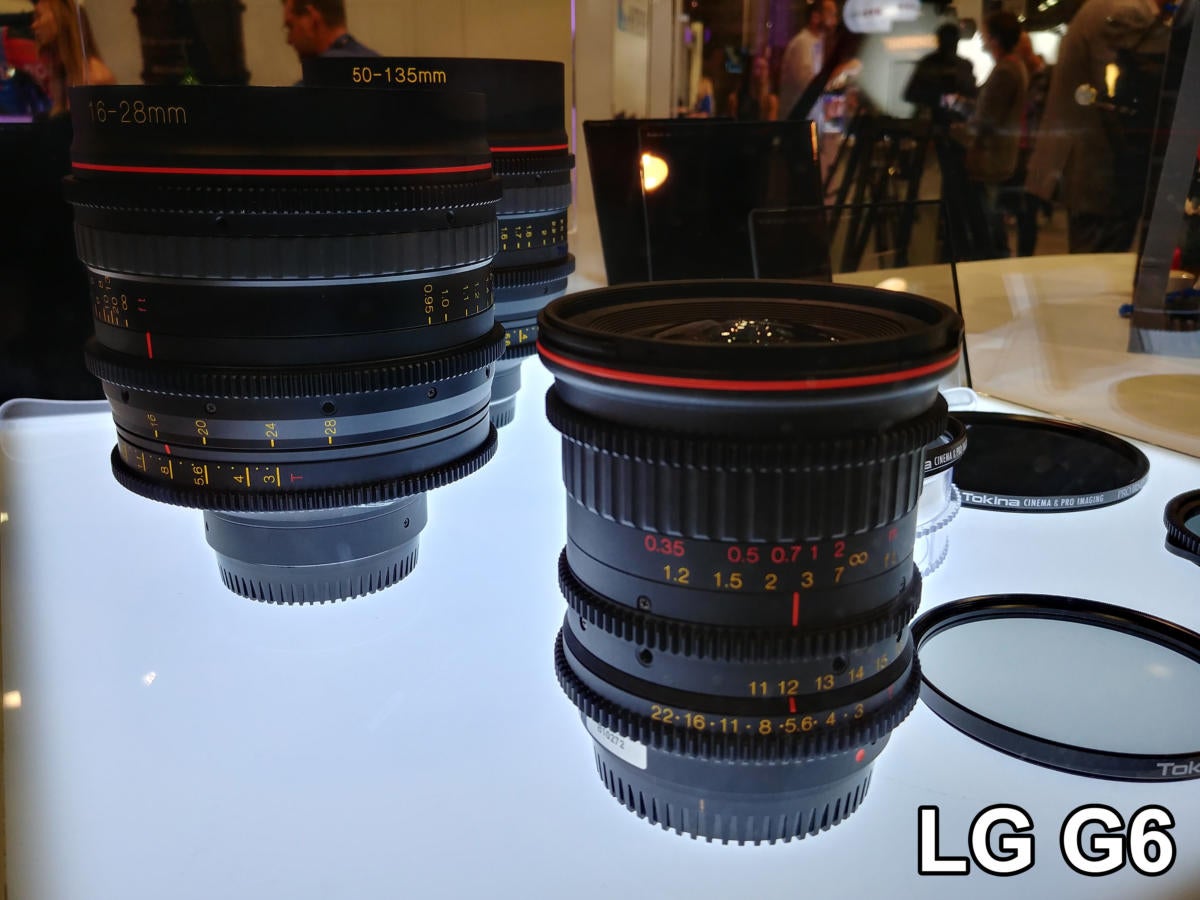 /
/accurately captures this complex lighting situation, with blueish table light warmer environment lighting in the background.
Finally, let’s look at this orange traffic cone in the grass. Yes, you might think the GS8’s image is more pleasing, but it’s really “greenifying” everything. The G6’s colors may be more dull, but it’s far more accurate. And if you zoom in look closely at the grass you’ll see a lot more variation in color.
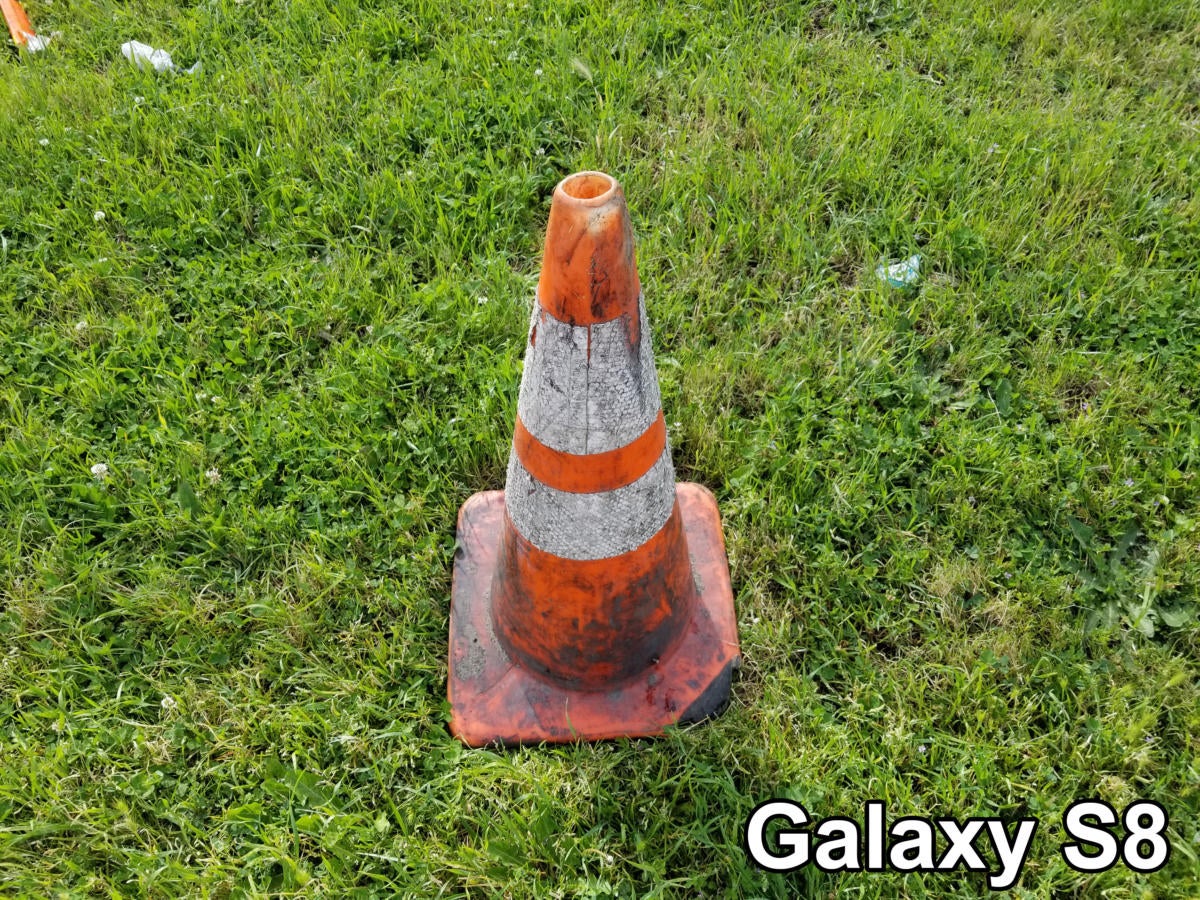 /
/Samsung’s color’s pop, but far too much. This grass isn’t nearly this green in real life.
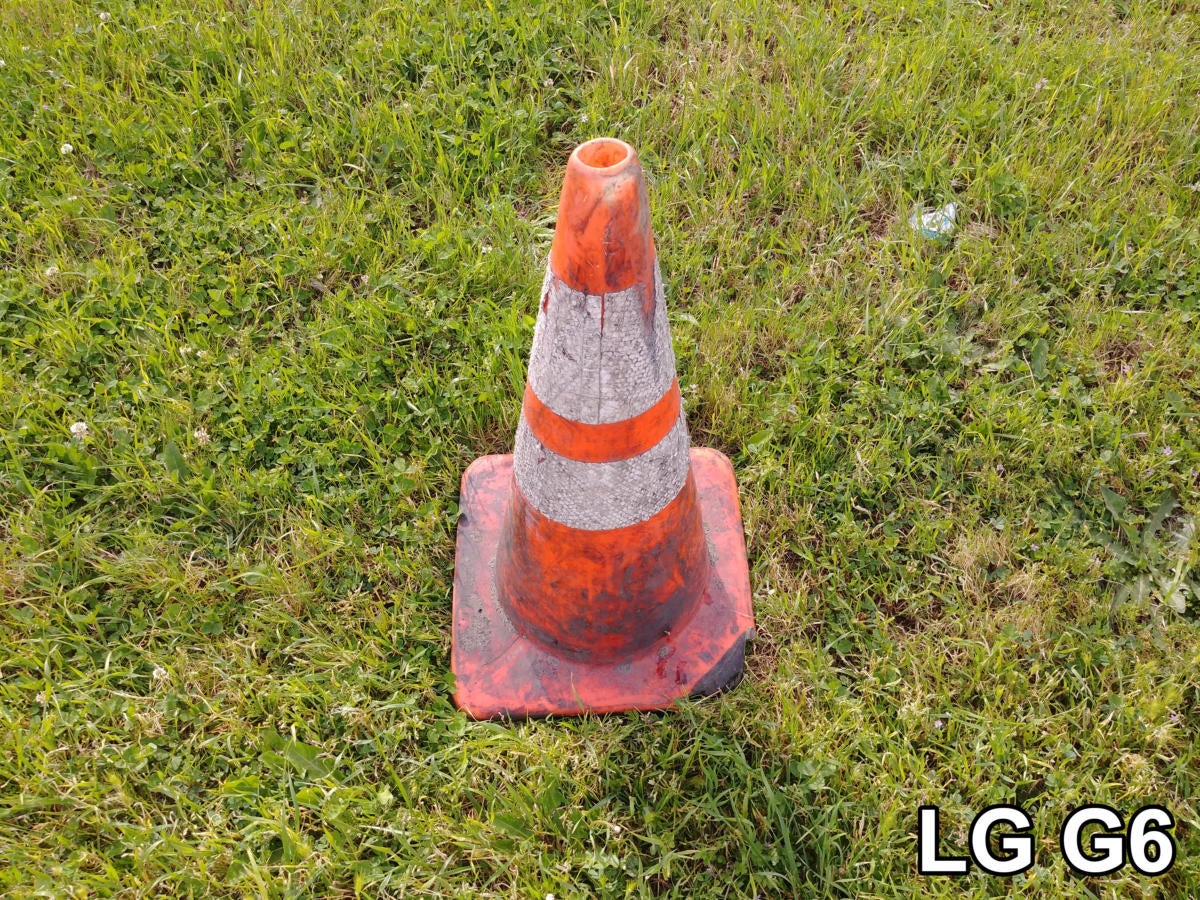 /
/The browns yellows in the grass on ‘s image aren’t as pleasing, but reflect the true colors.
Samsung has long been criticized for taking too many liberties with color saturation intensity, while its image processing seems to have improved, it’s still not nearly good enough. Too often, its colors simply don’t reflect reality, or it has trouble nailing the white balance of a scene. Samsung needs to aim for accuracy in its auto modes, leave this intense color stuff for its “creative” modes.
nner: by a wide margin.
Next, let’s check out clarity.
Clarity
en we talk about clarity, we’re looking at both the sharpness of the image (resolution fine detail) as well as image-processing artifacts. want to see an image that retains small details fine textures, without introducing a lot of noise or edge artifacts from over-sharpening.
t’s take a look at this bright daylight shot in s Vegas.
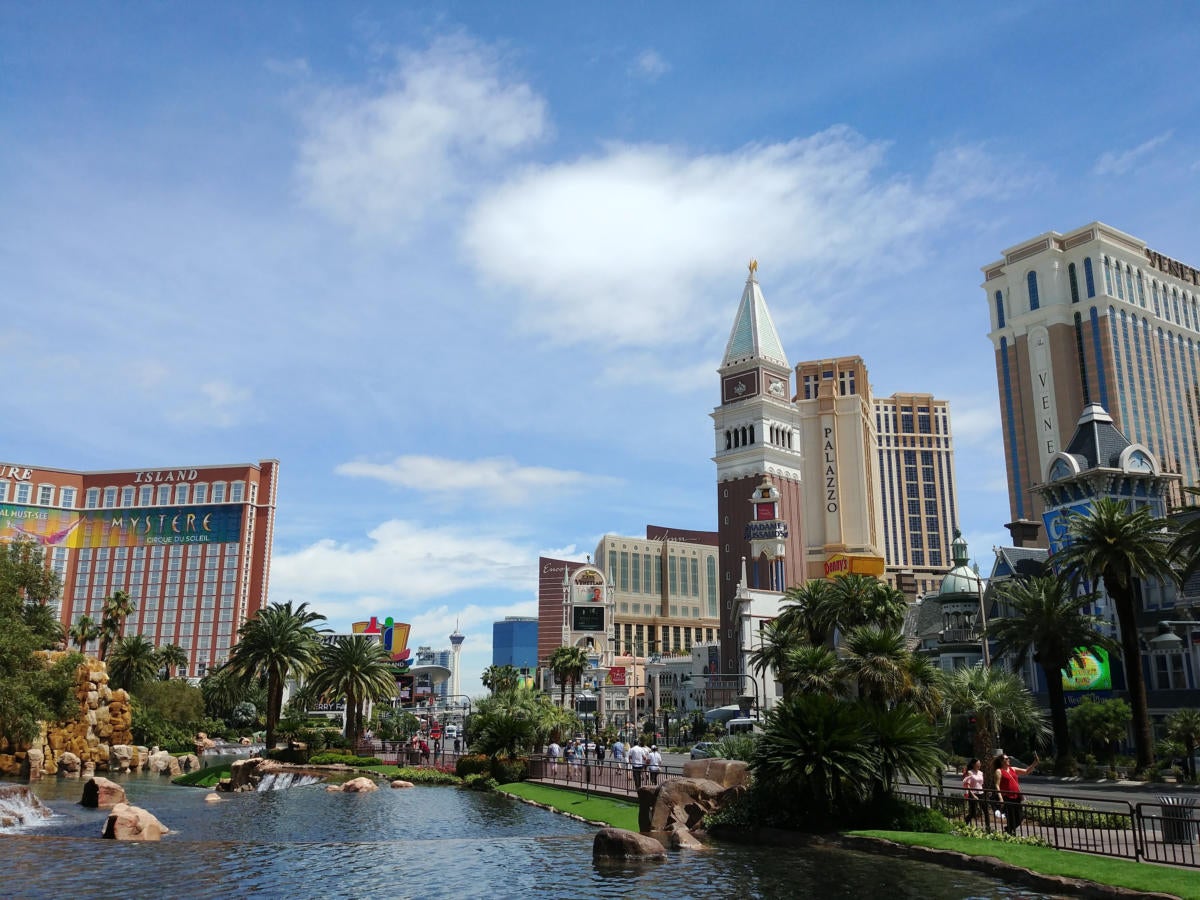 /
/Both cameras did a great job with detail noise in this bright daylight shot.
see similar detail noise between the two phones, they both do a great job. st look at this close-up, where the slats around those tiny windows are easily visible.
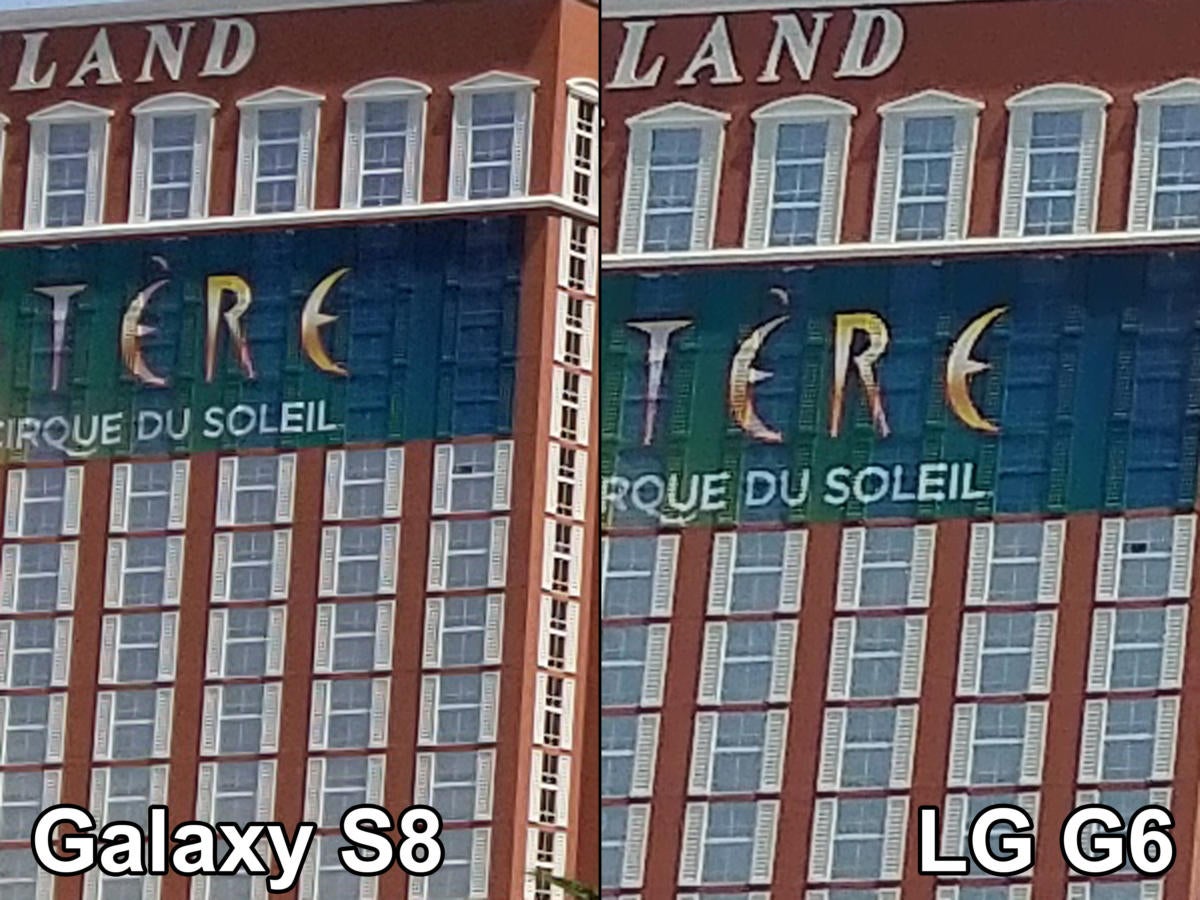 /
/Both phones do a great job with sharpness noise in bright outdoor light.
How about this close-up of a circuit board in bright indoor lighting?
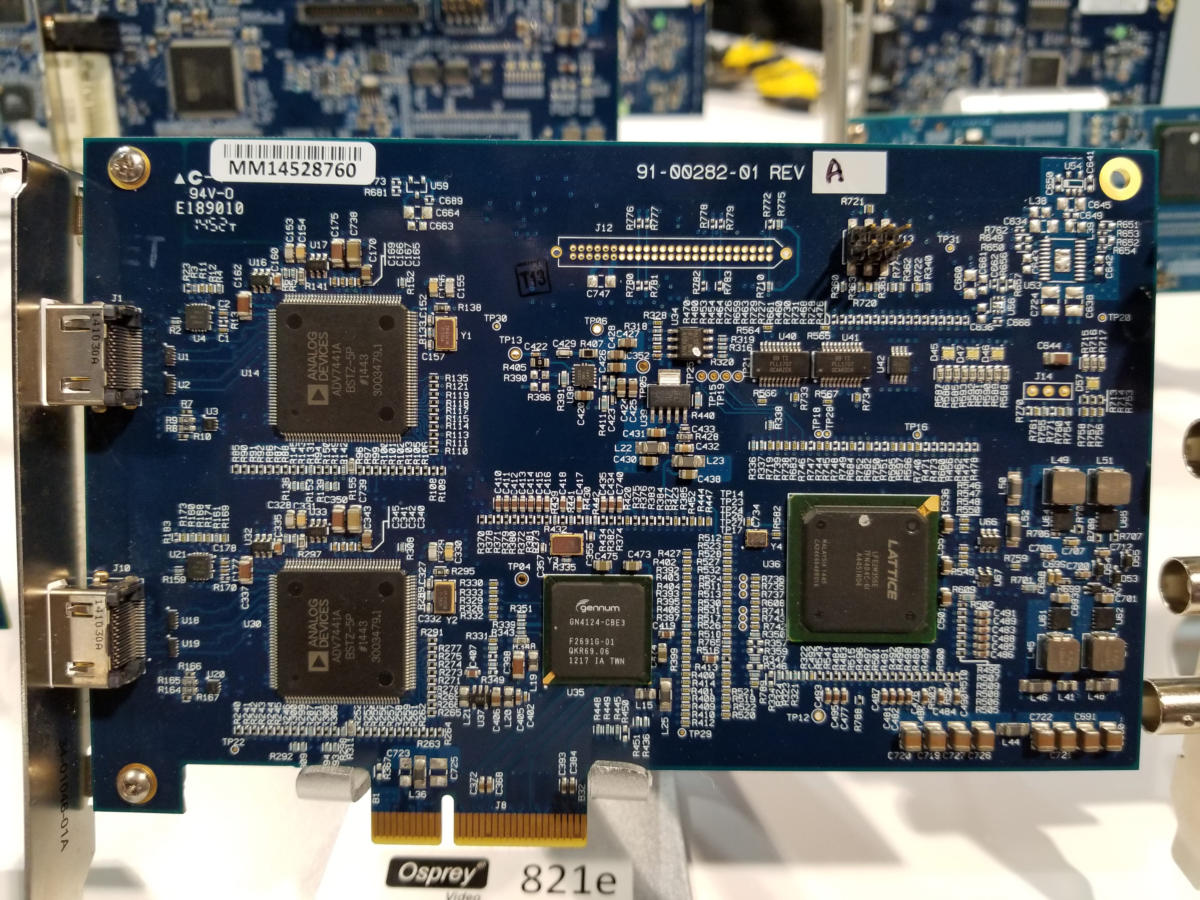 /
/ich phone will bring out the fine details of this circuit board?
Here, the Galaxy S8 pulls ahead, with more details fine writing visible when you look closely at the chips. The text printed on the circuit board is crisper, too.
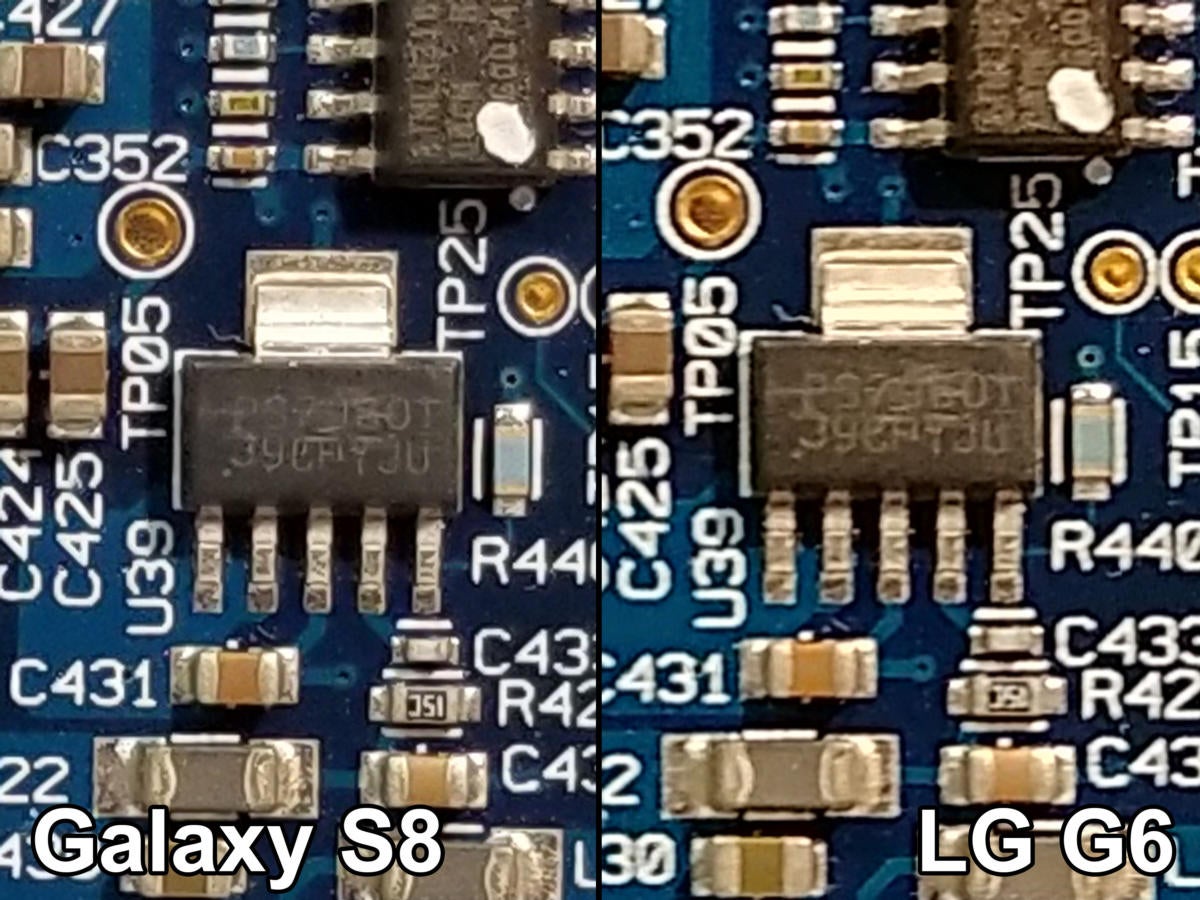 /
/The Galaxy S8 has crisper text fine lines on the circuit board.
t’s take a look at a really low light scene, with some color/detail photo targets thrown in for good measure.
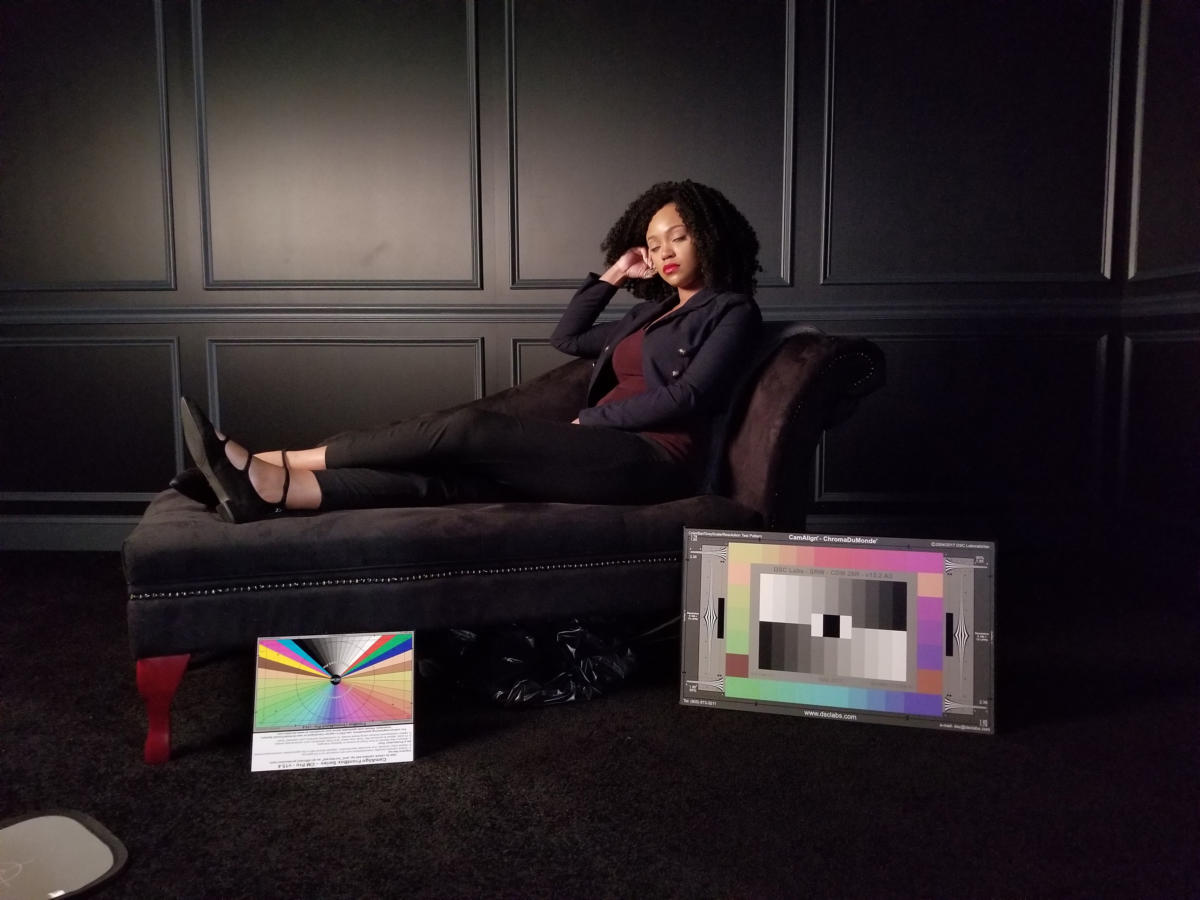 /
/The lighting in this scene is exceptionally dim. And it’s going to make a big difference in final photo quality.
It’s just no contest. The Galaxy S8’s bigger sensor wider aperture give it the advantage it needs to expose both the model the photo targets. The G6 just couldn’t keep up. It ruined the model’s skin tones facial detail, completely destroyed the photo targets.
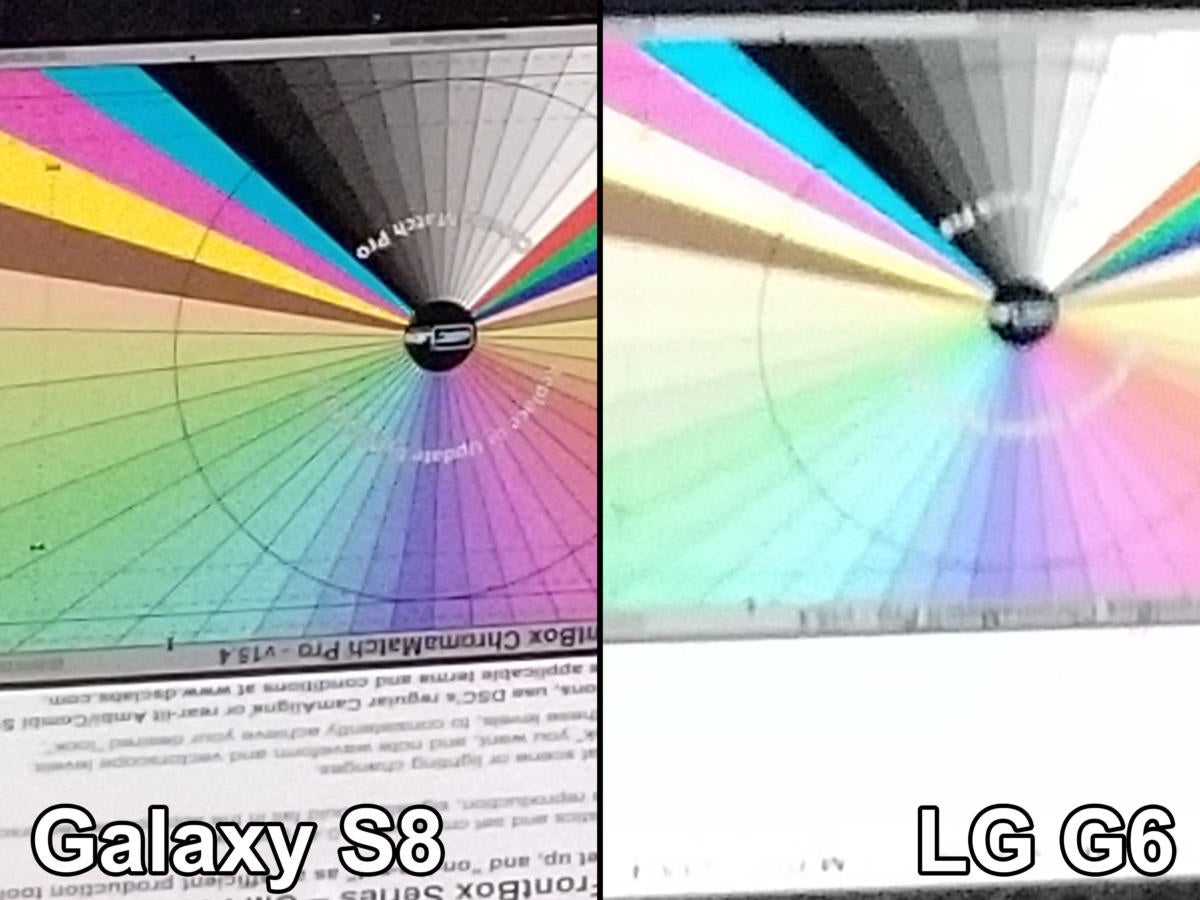 /
/The G6 couldn’t keep up with this low light scene. st look how bad the photo targets are!
In bright daylight it’s pretty close, but the darker it gets, the more the Galaxy S8 shines. A larger sensor with bigger pixels, a slightly brighter aperture, give it a real advantage in capturing detail reducing noise in darker environments.
nner: The Galaxy S8 takes clearer, less noisy shots, especially in low light.
Finally, let’s look at dynamic range.
Range
Here we’re going to look at the dynamic range captured by the camera (the difference between the brightest darkest possible areas captured in a single image) the way the camera chooses to expose the image, including tone mapping HDR.
In this first shot of a series of AV plugs, we see a pattern that will repeat itself throughout these tests. Both shots look good, but the Galaxy S8 exposes a little more brightly. This isn’t a problem in this shot, but it will be in others.
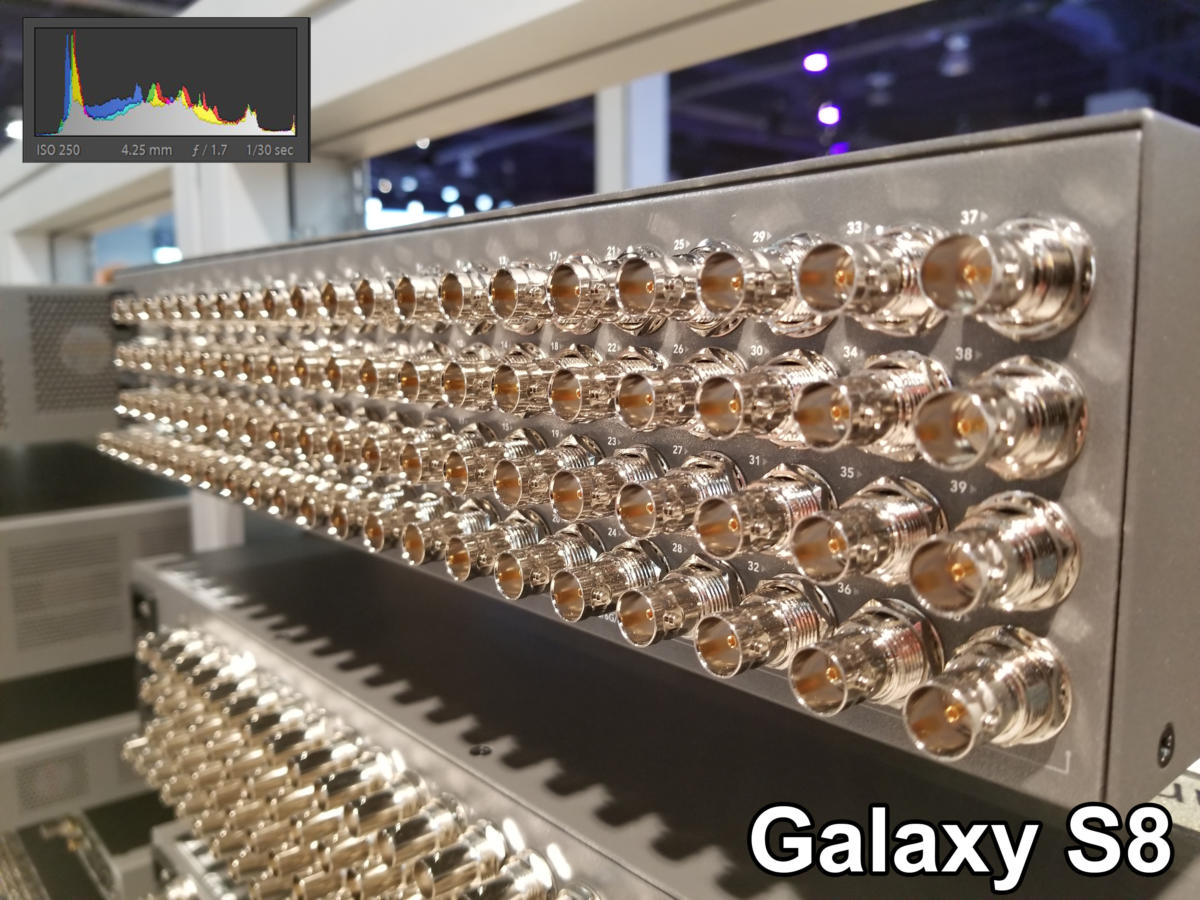 /
/The Galaxy S8 looks good, doesn’t lose any information, but it’s exposed more brightly than the G6.
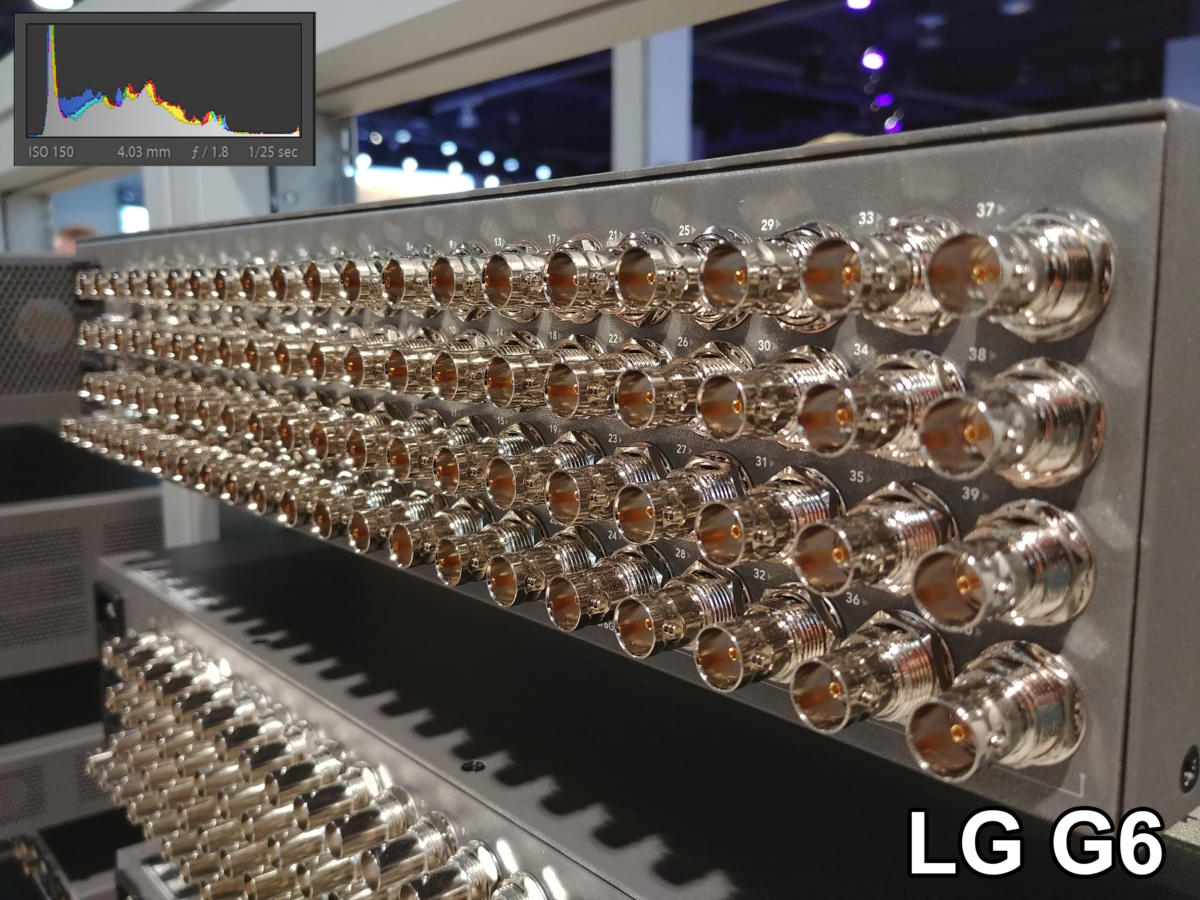 /
/‘s exposure is one or two stops darker, but there’s no lost information the image looks balanced.
start to see the consequences of Samsung’s high exposure settings in this next scene. Both cameras create a pleasing overall image, but look closely at the woman on set you can see the highlights blown out in her hair, her sleeves, the objects on the right side of the table.
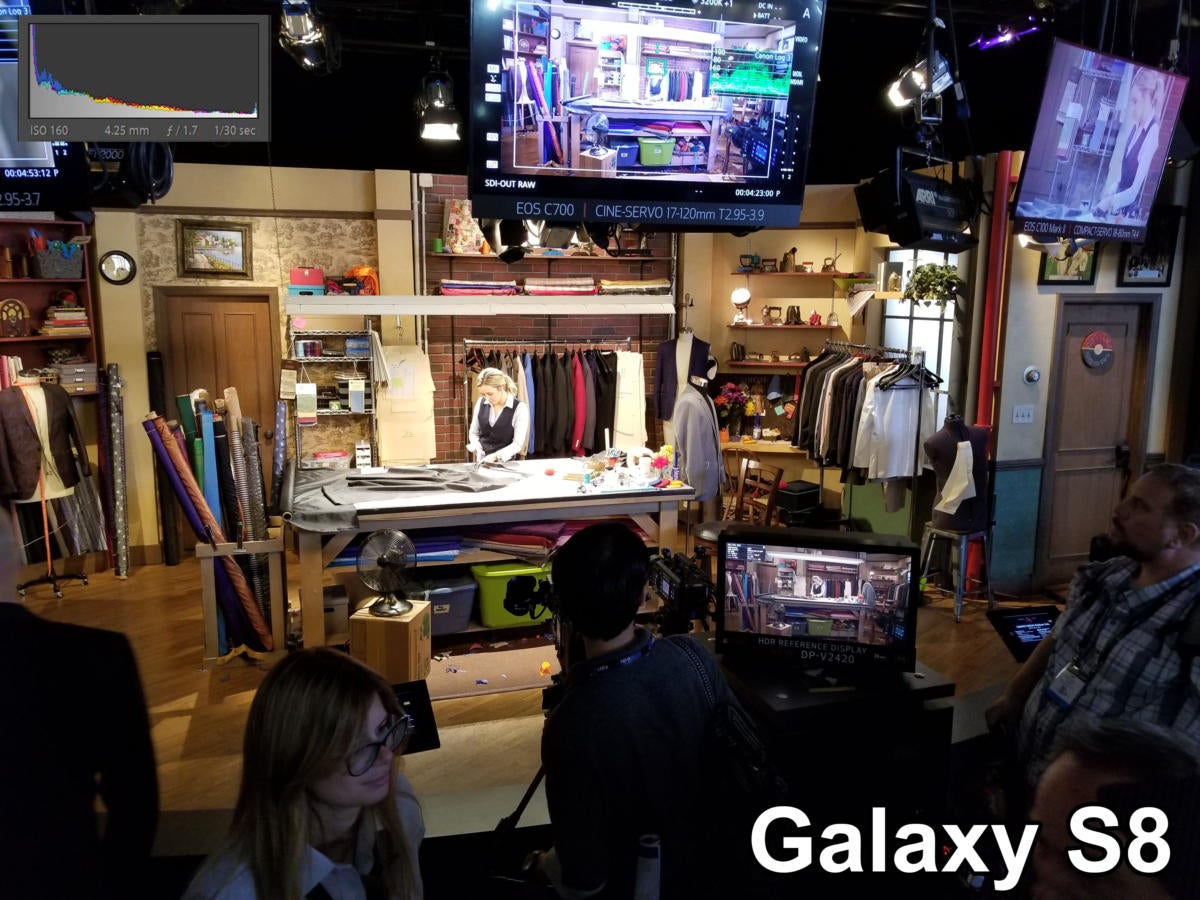 /
/Samsung produces a pleasing image, but highlights are blown out a little.
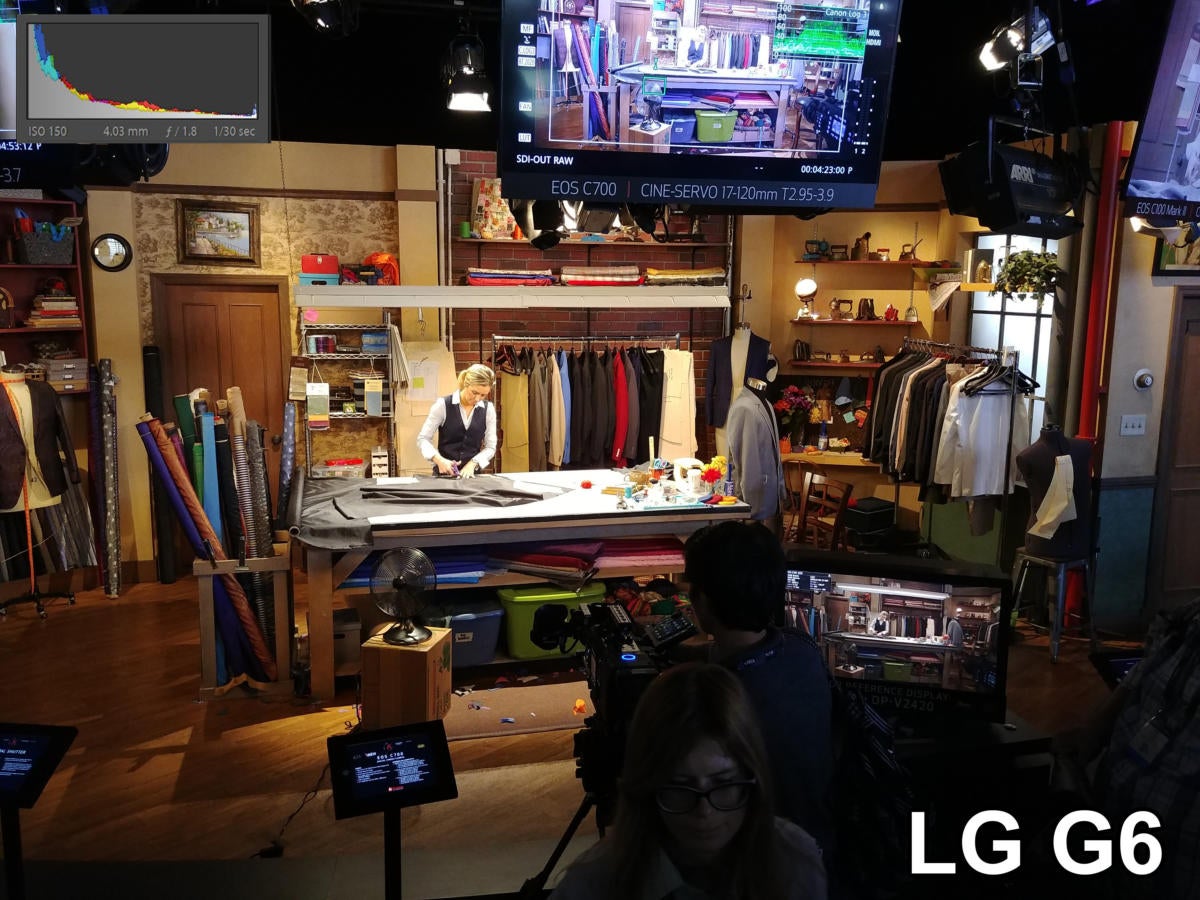 /
/The G6 manages to properly expose dark areas while not losing detail in the brightest spots.
This shot of a lighting booth at a trade show really demonstrates the difference in dynamic range. At first glace, both shoots look good. But take a look at the round lights on the left side. You can see the black lines for the little support rods. Those are totally blown out on the Galaxy S8. Both phones manage to keep detail up in the dark areas of the ceiling, however.
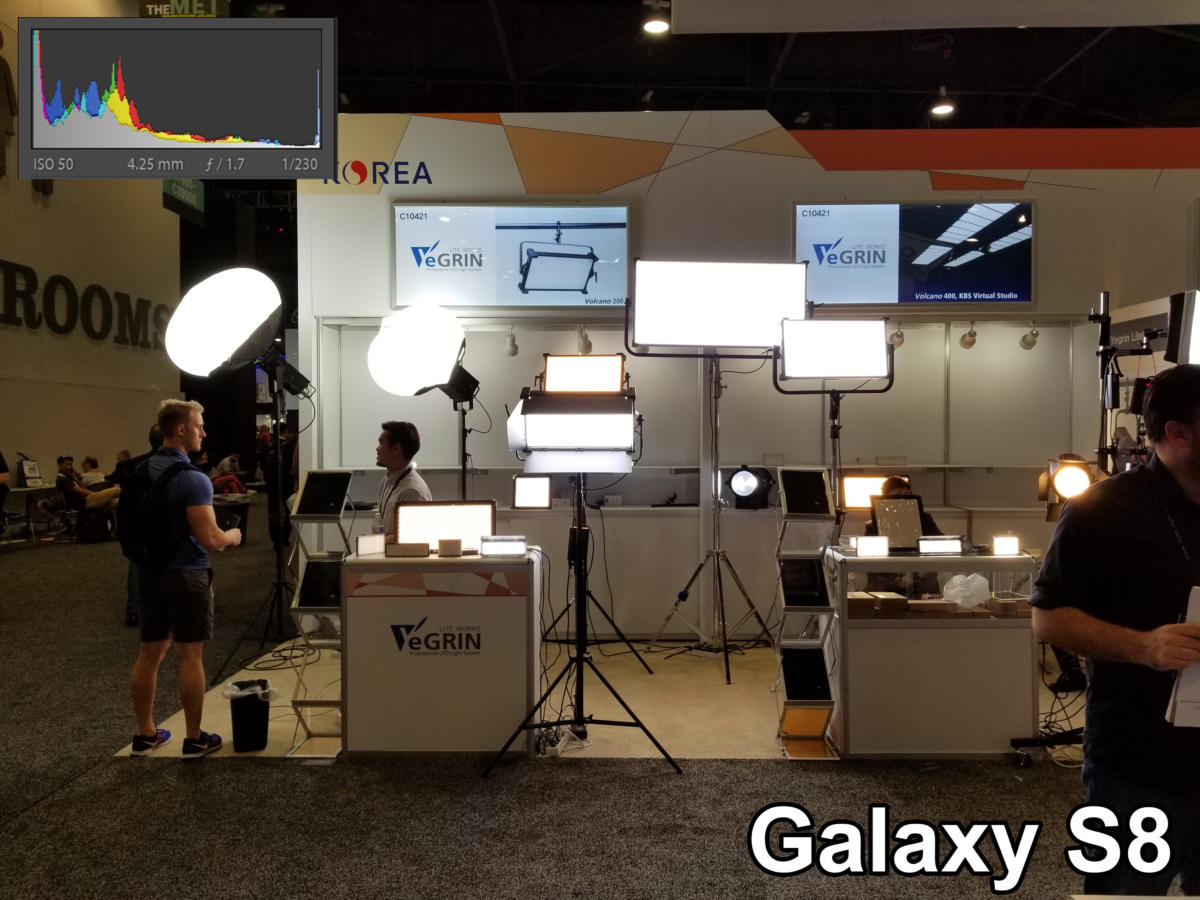 /
/The Galaxy S8 totally blows out the lights on the left.
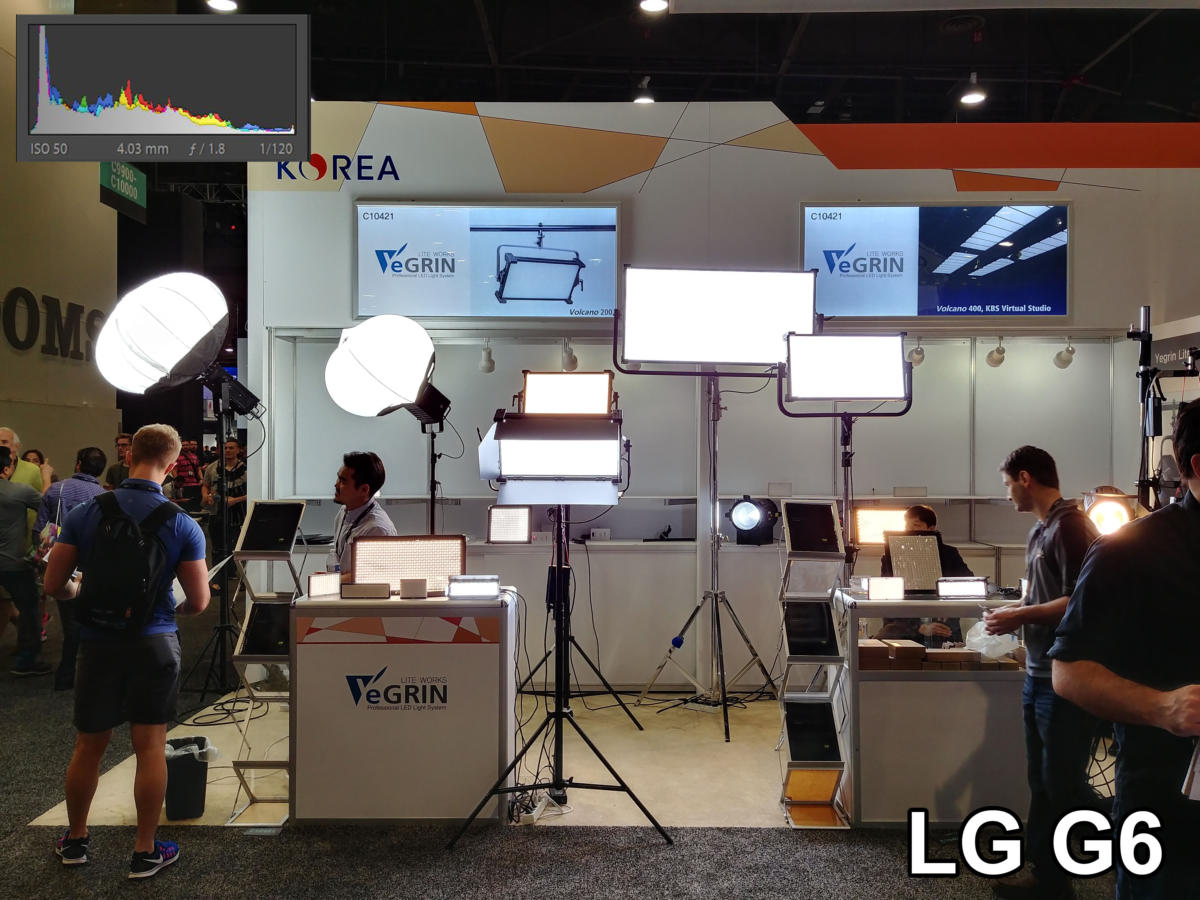 /
/The G6 retains fine details in the lights, as well as detail in the dark areas.
Both phones are leagues better than those of years past, but the Galaxy S8 has a tendency to slightly overexpose images, often blows out highlights in challenging scenes.
nner: The G6 simply does a better job of keeping the brightest darkest areas of a scene exposed properly.
Overall winner: G6
The G6 retains its crown in our smartphone shootout series. ile the Galaxy S8 takes better photos than the S7 did, despite similar specs, Samsung still has a little work to do. cking on to proper white balance in challenging scenes is tough, it still over-saturates colors, especially bright greens (like grass trees).
Again, this isn’t a measurement of all aspects of a smartphone’s camera. There are lots of factors to consider: dual-camera modes, special camera app modes features, shutter latency, video quality features, more. But when we closely examine the color, clarity, range of these two cameras when used as most people do (in auto mode), clearly comes out on top.
think smartphone buyers will be really happy with the camera on either phone, but Samsung’s going to have to do a little work if it wants to with this challenge with its next phone.


















